Sign up for our Book Club newsletter
Get the latest news, events and more from the Los Angeles Times Book Club, and help us get L.A. reading and talking.
You may occasionally receive promotional content from the Los Angeles Times.
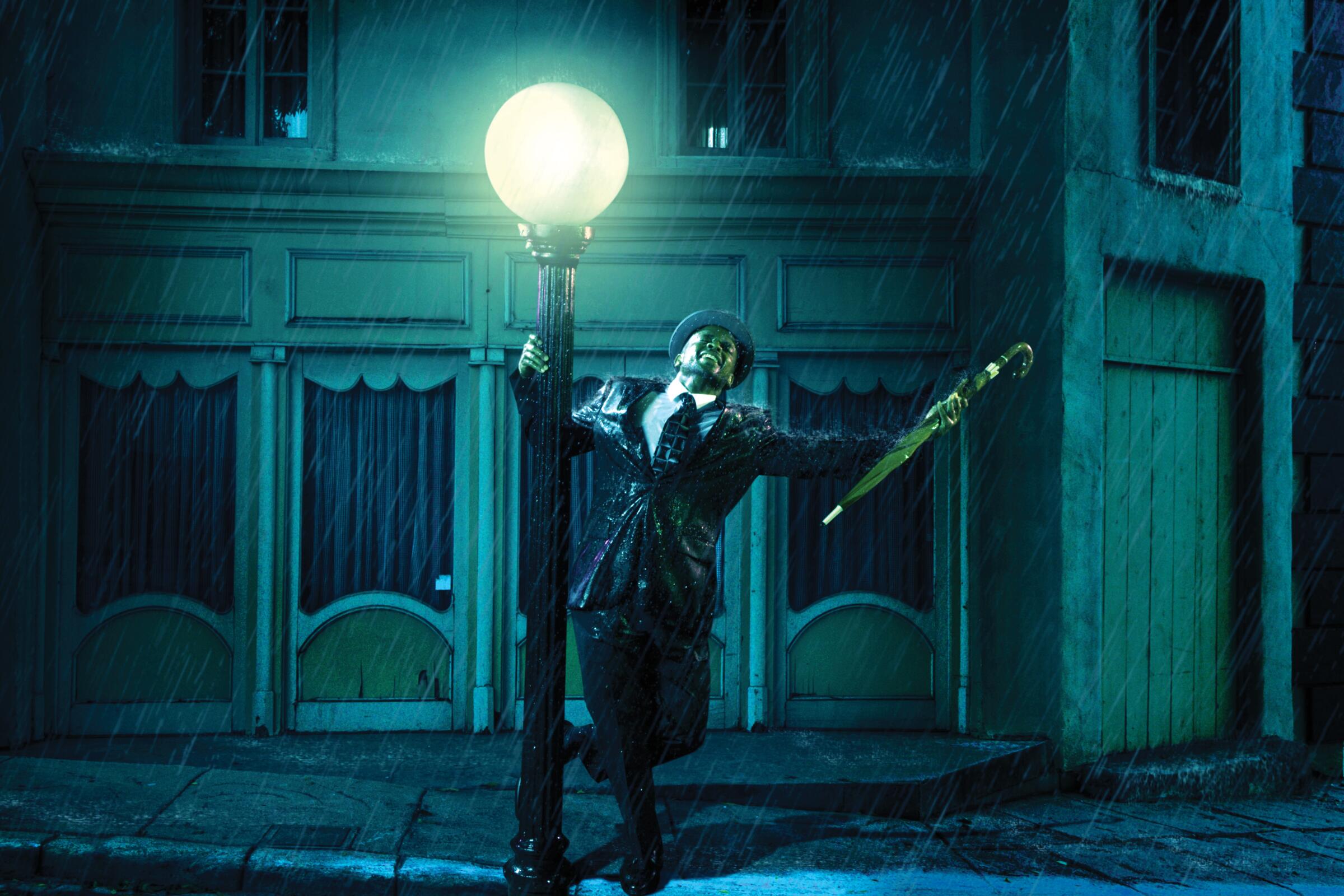
For eleven years, photographer Carell Augustus has created portraits of Black actors recast in classic Hollywood films like “The Shining,” “Bonnie & Clyde,” “Dirty Dancing,” “The Graduate” and “Back to the Future.” His resultant book, “Black Hollywood: Reimagining Iconic Movie Moments,” from Ebony Magazine publishing, hopes to amend the glaring omission of Black representation in the mainstream media during Hollywood’s golden ages.
Growing up in the 1980s, Augustus said, Black people were absent from mainstream cinema and pop culture imagery. He notes a particular distinction between how Black and white women were represented at the time and how frequently.
“The first time I saw a Black woman nude in a film, it felt awkward, weird, not right,” he wrote in the book’s introduction. “The image I was looking at was all very National Geographic and not meant to be attractive or alluring, but I knew in my 12-year-old soul something deeper was going on.”
“Their breasts were tied to their waistbands, they had four or five babies wrapped around them and they had baskets on their head,” he recalled by phone in advance of his book’s launch. “And all of that is absolutely beautiful but as a young teen, it didn’t look appealing [in the same way] the Lynda Carters, Farrah Fawcetts and Jessica Langes were always made to look. They didn’t put Black women in those roles like that.
“I got to watch my mom and aunts do their cornrows and put on makeup, put beads in their hair,” he added. “So I got that culturally from them but as far as imagery, it was not prevalent at all when I was growing up. I think a lot of it has changed for the better now, but it definitely wasn’t something that was focused upon.”
As a rising photographer in the early aughts, Augustus resolved to put Black people at the forefront of his work. The idea to make a book re-creating iconic Hollywood moments with an all-Black cast came on June 25, 2009 — the day Michael Jackson died.
“That day, no matter how you felt about him, his music was everywhere,” said Augustus. “I just thought as unfortunate as this whole thing is, at least he left the world all of this incredible talent to let us know that he was here. So that’s how it came to me. I wanted to do something impactful that I could focus on the Black community [with] and say, ‘Listen, I was here as an artist at one point.’”
Here, Augustus describes the process of putting the book together.
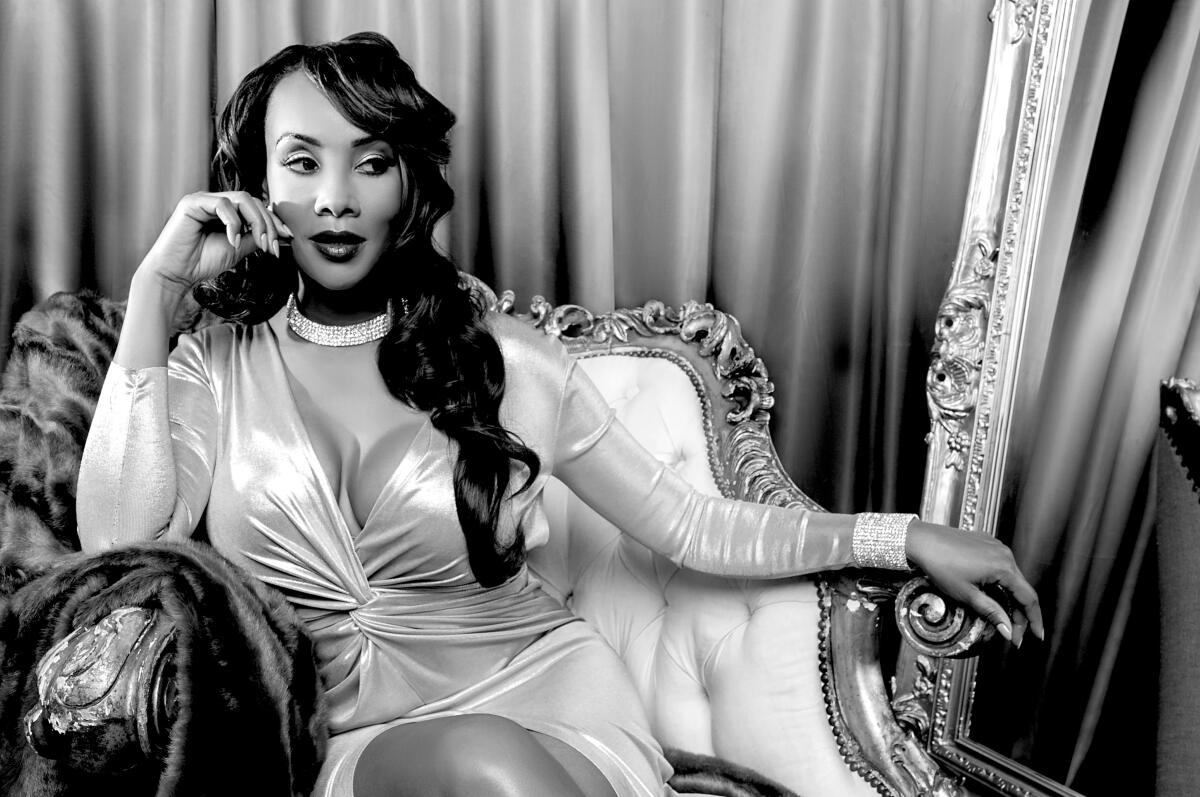
I used to be the lead photographer at a gifting suite. So a lot of them came in and if I was familiar with them and I liked them, I’d say, “Hey, I wanted you to be aware that I’m working on this photography book on African Americans where I re-create scenes from movies and iconic images.” And anybody that I asked — I think with the exception of two people — immediately loved what I presented to them. They would say to me, “Nobody has pulled me to the side to ask me to do a creative shoot. I’ve always been attached to people and against the white sides, but nobody has pulled me to the side to say, ‘Why don’t we focus on you to be creative for once?’” That made me feel really good because you wouldn’t [expect] that from Vivica Fox [or] Garcelle [Beauvais]. People don’t tend to want to focus on us that way, so I did.
A lot of [the film moments] came from what had impacted me growing up. I was born in ’75, so I’m a child of the ’80s. [Back then] I recognized that my mom and my aunts, their beauty wasn’t amplified. We always saw these really pretty, perky blond girls running up the beach and they always seemed to be having fun and getting photographed. And when we saw Black girls, it was literally like “National Geographic.” Particularly for young Black males, it does something to your perspective on Black women and Black beauty. You grow up in your teen years having to fight this idea of what beauty is because you’ve been poured this thing into you in your whole life. That was my goal, to be the anti version of that.
My very first shot was February of 2010. One of the first people I had access to was the dearly departed Tiny Lister. He and I went back and forth [trying to schedule] and I had some friends who were really frustrated with me that were like, “Dude, just move on to the next one and try to get somebody else.” Unfortunately he and I never got to shoot together. I ended up shooting Aisha Hinds first, who ironically was the first person in the book as “Patton” under this huge American flag. I shot Kellee Stewart about a month later as “Mommie Dearest,” and then they just trickled in.
The last person I shot was Mr. Blair Underwood in December of 2021. It was “The Shining,” “Here’s Johnny,” with his head coming through the door. And ironically that’s the shot I wanted to do with Tiny Lister because Tiny has such an iconic face. But ultimately things happened the way they were supposed to happen. I got a lot of no’s and a lot of rejection, so I oftentimes had to focus on all of the people that said yes to me and just knew that I was onto something.
I had a really cool conversation with Aldis Hodge about three or four years ago. People don’t know that he’s a phenomenal, intricate watchmaker. And he was like, “Listen, Carell. I have a watch I’ve been working on for eight, nine years. The beauty is, you have a body of work that spans over all of this time. So that in and of itself is the art.” I am just happy that the people I shot with aged beautifully, so you really can’t tell. [Laughs]
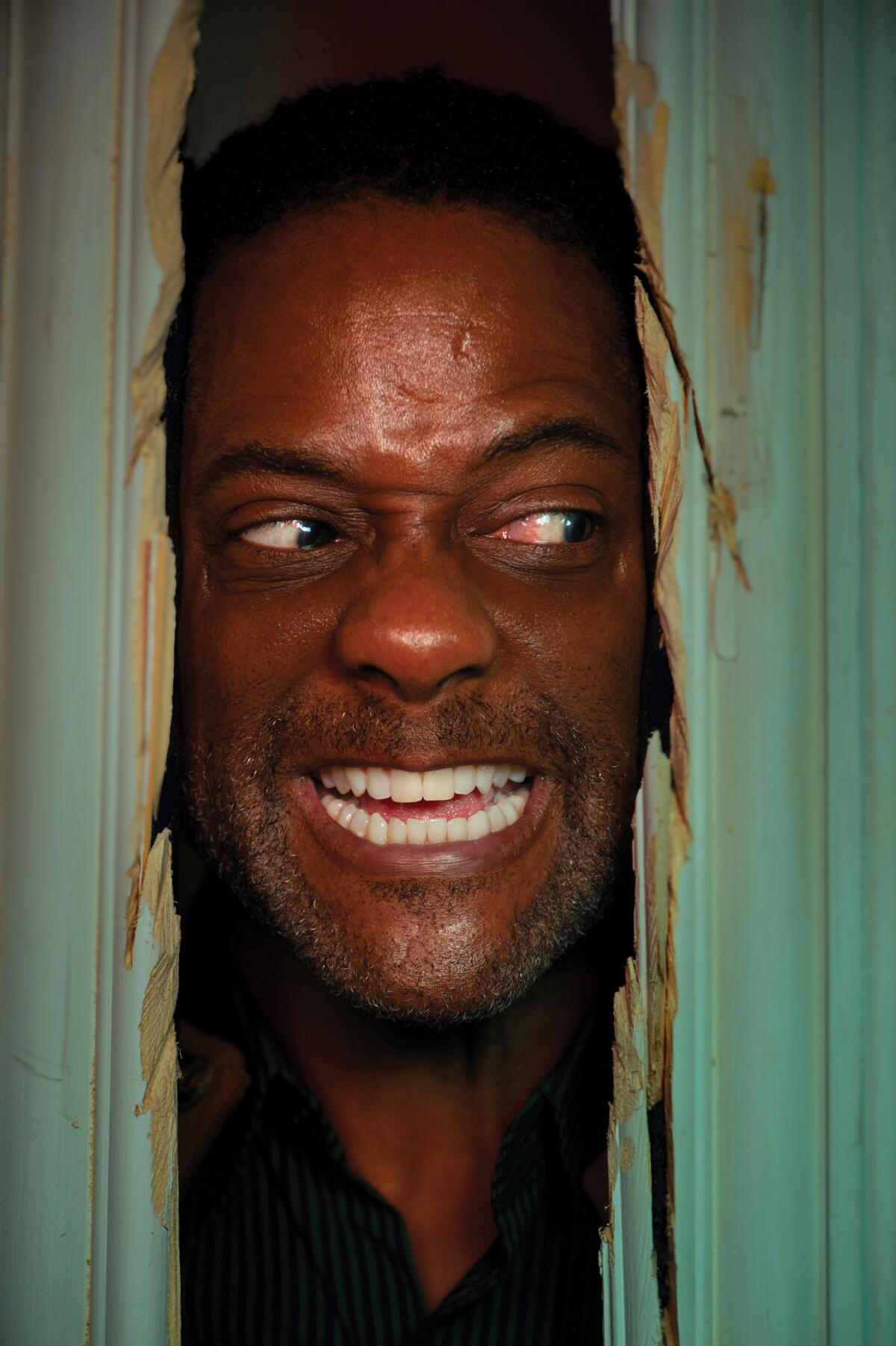
Sometimes it’d be fast and furious and sometimes it’d be three to seven months [in between]. Sometimes it’d be two in a day and sometimes I’d get one another two months later. The average between somebody saying yes and walking into a studio was six months. That’s how much back-and-forth about who’s going to do hair and makeup, [location and scheduling there was]. And at some points I didn’t even have that figured out yet. I just had to acquiesce and make sure that everybody’s happy.
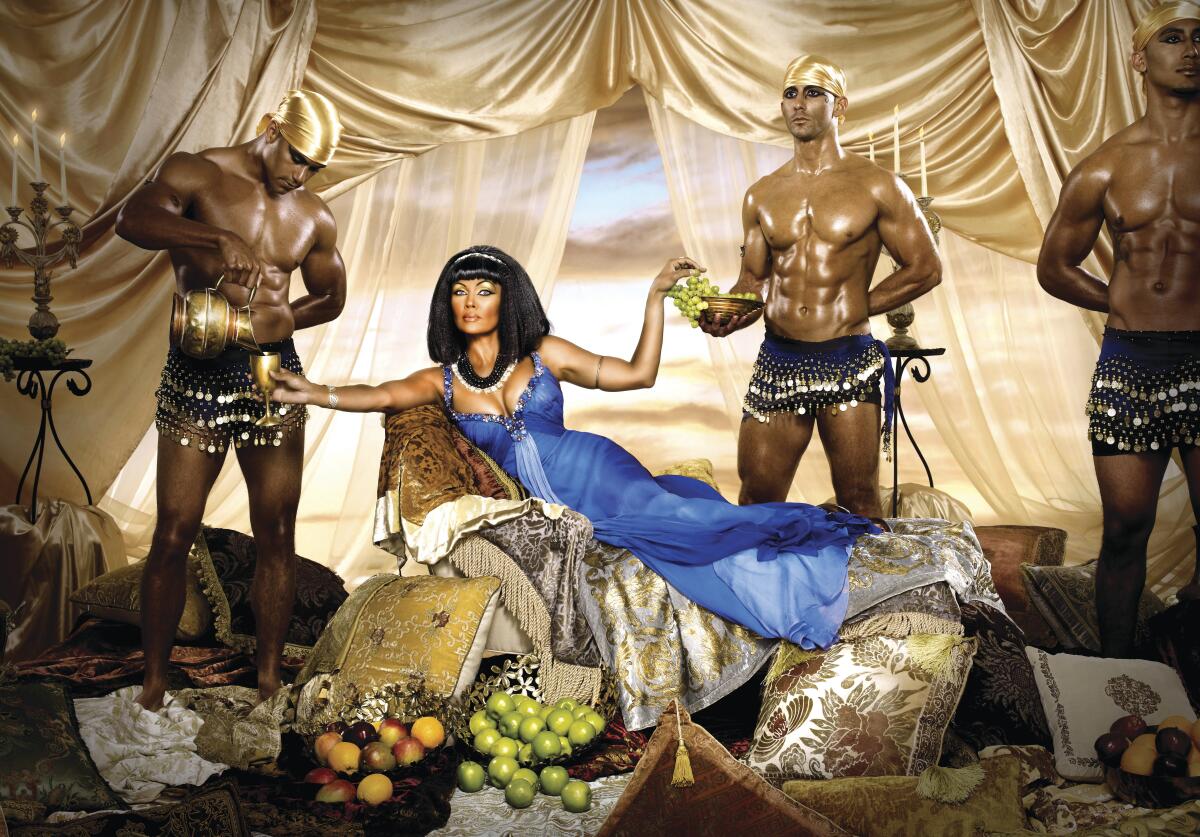
One is Nadine Ellis in “Dial M for Murder.” The expression on Nadine’s face says it all. I loved [shooting the poster for] “The 40-Year-Old Virgin” with Mr. Eugene Byrd. We [also shot] the scene where he was being waxed, but the poster scene is one of my favorites and he just hit it out of the park. “Psycho.” “The Matrix” for obvious reasons. “Singin’ in the Rain” with Dulé Hill, a trained tap dancer. Lalah Hathaway, daughter of Donny Hathaway, in the red dress and the dreads [as Jessica Rabbit].
And “Cleopatra.” I mean, it was Vanessa Williams. I didn’t want anybody else for that because she has always embodied that strength. I remember being a 9-year-old not really knowing what was happening but watching my family react to the fact that she was the first Black Miss America and now this crown was being taken from her. They tried to humiliate that girl but then look what she did: Grammys, Tonys, Emmys, TV, stage, movies. I couldn’t sleep for like a week before [the shoot].
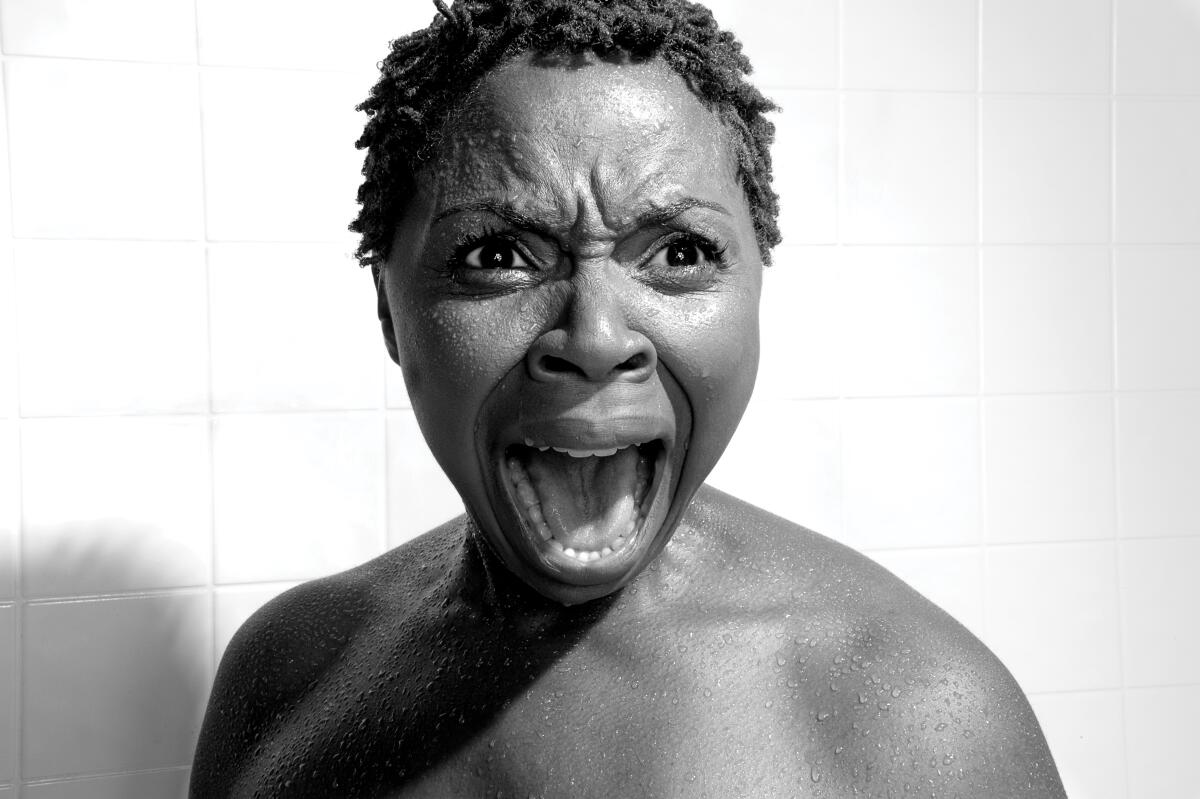
I was filming a reality show, “L.A. Hair” with Kim Kimble, and we went to shoot my good friend and a major talent, Vivica A. Fox. We had discussed shooting her as Veronica Lake up until the shoot and then we got to the shoot and she didn’t want to lounge. And Veronica Lake, all she did was lounge. She was upset with [the hairstylist] because she got there late and the hair was synthetic when it should’ve been human. I didn’t want Vivica Fox to think I was in cahoots to make her look bad. [She said,] “I’m going to stay and do it, but they have to leave, the whole crew.” So that was a little difficult because you really want to be able to share this with the people who helped you create it. I was in the process of kicking people out who had been very instrumental in getting Vivica there. But I had to change into [my] business side and say, “Listen, I need Vivica Fox’s name in my book. I’m sorry but ya’ll have to go.”
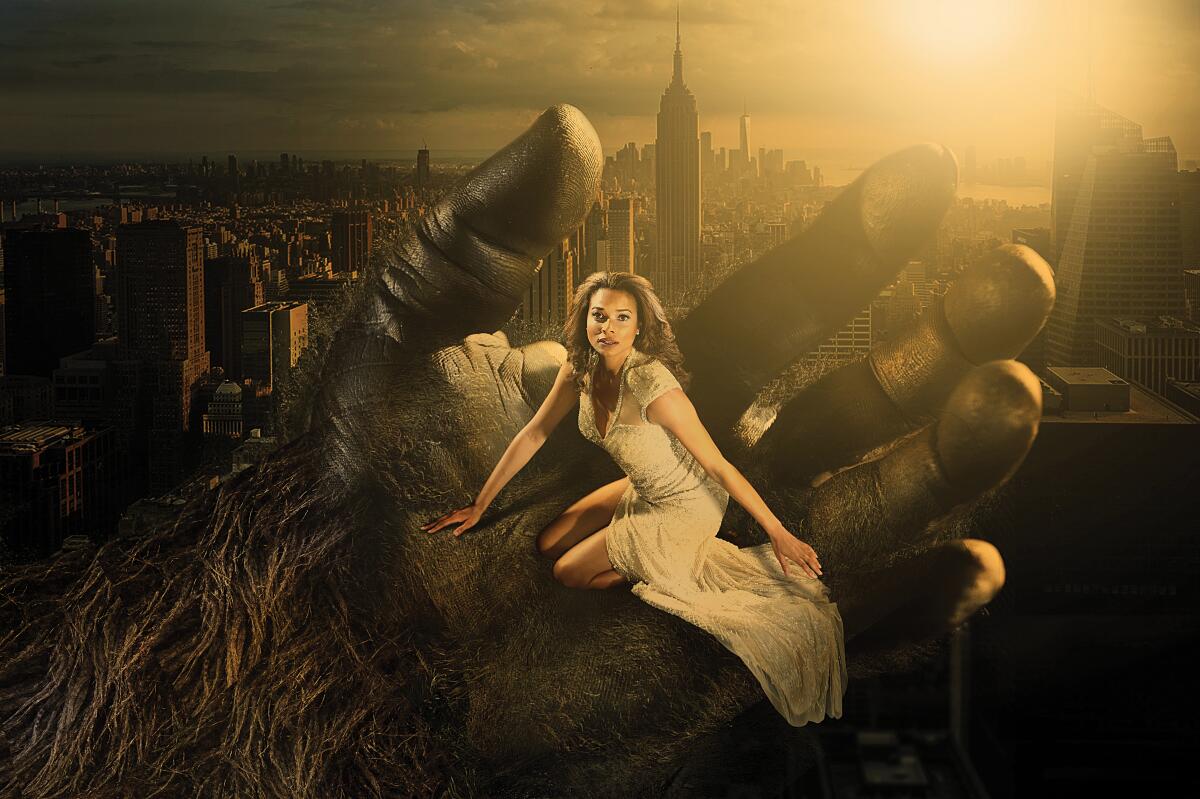
There’s two that come to mind as far as the most elaborate. The first one was “Little Red Riding Hood,” because we had to make a forest within a studio with branches and leaves. And Vanessa Williams [for “Cleopatra”], there were all these pillows, all this fabric. We painted the site gold and it had to dry before we even started building.
One of the easiest was Adina Porter, who I think has a very similar, unique profile like Barbra Streisand. I had such a great team, we got the wig down, the earrings down, the outfit down. And while they were setting her up, I had the model light on and I turned the flash off because the model light was giving such a great, natural light. And that literally was within the first two frames. We shot some more, added flash, but my mind was already made up early on and that’s the shot that ended up in the book. Because it’s not about directly copying anything, it was also about using the original shot as inspiration and changing it up a bit.
I showed Sharon Stone her [“Basic Instinct”] redo with Lauren London and she goes, “Oh my gosh, she’s absolutely beautiful, this girl.” Faye Dunaway, I was shooting in Cannes and I pulled up the picture she inspired for “Mommie Dearest.” She saw it and goes, “You delete that right now!” and she screamed at me. Robin, my [publicist], goes “That’s not [a photo of] you,” which I guess is a compliment to me. So [Dunaway] says, “Oh, it’s just not a film I like very much.” She was not having it. She actually makes two appearances, in “Bonnie & Clyde” and “Mommie Dearest.” I hadn’t done the “Bonnie & Clyde” one to show her so we just let her be upset.
And about a year ago, I was on a job with Art Streiber, one of the biggest commercial photographers in L.A. And he says, “Hey, I heard about your book and I really want to see some of your stuff.” So I showed him “The Matrix,” “King Kong” and “The 40-Year-Old Virgin.” And he goes, “Oh my God, I shot that poster!” I’ve met a few of the people that were the original subjects but I’ve never met anybody that shot the original poster. And last but not least, I showed Jessica Lange the “King Kong” shot. She goes, “Oh my God, I want a copy of that.” And I said, “Absolutely, Miss Lange, I will give you a copy” and I will.
There are two people I can think of that did not feel the first shots that I pitched to them: Kel Mitchell and Toni Trucks. I said to Kel that I wanted to shoot him as “American Psycho” and he goes, “Well, that’s not really my thing now at this stage of my life. I’m a little more wholesome.” And I’m thinking wholesome ... “Forrest Gump.” He goes, “Perfect, let’s do it.” And as far as Toni Trucks, I wanted to shoot her as Poison Ivy because I think we need a couple more Black superheroes than we have. She goes, “I love that idea and I totally would do it but I would love to explore a few more things, maybe something a little more elegant.” I said I got it — Marlene Dietrich. I have excellent wardrobe people and they found an outfit that was perfect, almost a complete duplicate, and we went with that. So those are the only two — everybody else just gave themselves to it.
I did this with dirt, splinters, blood, sweat and tears. Because when you don’t have a budget and you don’t have the clout to have people help you, [you have to improvise]. So with that necklace, I went down to Santee Alley in DTLA where there’s all these jewelry shops [and got a brooch and pearls]. I think there’s tape, safety pins and bobby pins all behind that brooch holding it together. I’m just glad it lasted through the shoot before we tossed it aside.
And I looked and looked for anything that could be used as King Kong’s hand in that shot. I had gone to prop houses, I bought costumes, but everything looked plastic and weird and synthetic, so I painted my hand black. I had the fur from an old King Kong costume that didn’t work and wrapped it around my wrist. And then my retouch [artist] and I discussed [editing techniques] because apes have got ridges in their hands, which I think makes it that much more realistic. So he went in and puffed up my fingers to make them look like a gorilla’s or ape’s.
There has to be a part two because there’s a lot of things I didn’t get the chance to do. I really wanted Serena Williams as the robot they built in “Weird Science.” We went back and forth and couldn’t make it happen. I wanted to do Lizzo from the “Flashdance” scene where she drops the water on herself.
I would like to get a couple of drag queens to do something like “Hocus Pocus.” I tried very hard to get drag queens for this one, but it was like trying to get Melania Trump, Michelle Obama and Hillary Clinton all in the same room.
I do plan on starting a part two, hopefully when I get back from my book tour. I want to do [what] Ryan Murphy does, where you get a lot of the same people to come back and do something completely different. I think I’m going to focus on a lot of ads in the next one, as opposed to just movies. I think it’ll be more ads from the ’40s to ’80s, with some entertainment stuff as well. So it’s not going to take me 12 years this time.
Watch L.A. Times Today at 7 p.m. on Spectrum News 1 on Channel 1 or live stream on the Spectrum News App. Palos Verdes Peninsula and Orange County viewers can watch on Cox Systems on channel 99.
Sign up for our Book Club newsletter
Get the latest news, events and more from the Los Angeles Times Book Club, and help us get L.A. reading and talking.
You may occasionally receive promotional content from the Los Angeles Times.